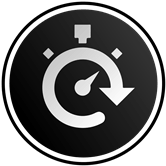Updated on November 01, 2025 05:33:18 PM
If your product has a unique design or appearance, registering it in Maharashtra is a smart way to protect it. Design registration gives you full legal rights over how your product looks—this includes its shape, pattern, structure, or color combination—so no one else can copy or use it without your permission.
While patents protect how a product works, design registration protects how it looks. Whether your design is 2D, 3D, or a mix of both, registering it under the Designs Act, 2000—part of India’s Intellectual Property Rights (IPR) system—gives you strong legal protection against copying or imitation.
Once your design is registered, you’ll be its official owner and can even license it to others to earn royalty income. At Professional Utilities, we take care of the whole design registration process in Maharashtra—from preparing the documents to getting final approval. Our team makes sure your design stays protected, so you can focus on growing your business with peace of mind.

Design registration in Maharashtra is a legal process that protects the way your product looks. It gives you complete rights over your product’s design—such as its shape, pattern, or overall style—so others can't copy or use it without your permission. If your product has a special and eye-catching design, registering it helps keep it safe from imitation.
Under the Designs Act, 2000, once your design is registered, you get legal protection for 10 years, with the option to renew it for another 5 years. This is especially helpful for businesses, startups, and individual creators in Maharashtra, as it protects their original designs and helps them create a strong and trustworthy brand in the market.
A design under IPR regulations refers to the visual elements of a product including its shape configuration pattern and colors. The design can exist as either a two-dimensional drawing or a three-dimensional model as long as it presents an visual aspect.
For Example : A unique torchlight shape can become eligible for registration. You can only protect design through appearance because functionality remains outside the scope of protection. A physical object called an article requires the design to be transformed through industrial or manual processes.
The following elements do not qualify as design elements: The product's operational mechanics together with trademarks and artistic works protected by copyright law are excluded from design protection.
To qualify for Industrial design registration eligibility(also know as a design patent) demands that your design satisfies these requirements to receive legal protection which grants you exclusive rights for its use and sale or licensing. An industrial design requires three essential requirements to qualify for registration.
Design registration offers key benefits to help safeguard and strengthen your brand:
Following steps are mentioned below which need to be undergo while obtaining Trademark Registration:
Before sharing your design with manufacturers, investors, or designers, ask them to sign an NDA (Non-Disclosure Agreement). This prevents them from using or copying your design without permission.
Before applying for design registration, it is essential to verify that your design is unique and not already registered. This helps avoid legal issues and ensures that your design isn’t already registered.
How to Check for Similar Designs:
If you cannot find a similar registered design, you may proceed with filing a request for a Prior Art Search (Form-7) along with a fee of ₹1,000.
Once you confirm that your design is new, You’ll prepare your design application in which you need to show your design in 7 views: perspective (overall), top, bottom, front, rear, left side, and right side. Use software like SolidWorks if you want a 3D model, or draw it by hand. Put each view on an A4 sheet (up to 7 sheets total) and include:
Once you have confirmed the uniqueness of your design and peapre the design applciation, the next step is to file the design application with the Maharashtran Patent Office through the IP Maharashtra e-filing system.
Head to ipMaharashtra.gov.in, find the e-filing design section, and click “New User Sign Up.” Choose your applicant type:
Fill in Details – Enter your name, address, and other required information.
Upload E-Signature – Authenticate your application with an e-signature.
Submit & Confirm – Complete the process and receive a confirmation email.
After filing, the Design Office will examine your application. If they find any issues, they will send a First Examination Report (FER). You need to respond within 3 months to clarify or correct any objections.If the examiner has further doubts, they may schedule a hearing where you (or your lawyer) can explain your case.After filing, the Design Office will examine your application. If they find any issues, they will send a First Examination Report (FER). You need to respond within 3 months to clarify or correct any objections.If the examiner has further doubts, they may schedule a hearing where you (or your lawyer) can explain your case.
Once all objections are resolved, the Design Office will approve your application and issue a Design Registration Certificate. This certificate proves your legal ownership of the design.
Here’s a list of documents required for a design application:
Registering a design in Maharashtra involves specific government fees, which vary based on the applicant type—individuals, small entities, and others (companies, firms, etc.). The fee structure is outlined under the Designs Act, 2000 and its related rules
| S.No. | Purpose | Form No. | Fees (INR) |
|---|---|---|---|
| 1 | Application for design registration (Sections 5 & 44) | Form-1 | 1,000 |
| 2 | Claim to proceed as an applicant or joint applicant (Section 8) | Form-2 | 500 |
| 3 | Application for extension of copyright (Section 11) | Form-3 | 2,000 |
| 4 | Application for restoration of lapsed design (Section 12) | Form-4 | 1,000 |
| 5 | Additional fee for restoration | - | 1,000 |
| 6 | Inspection of a registered design (Section 17) | Form-5 | 500 |
| 7 | Request for information on a design (when registration number is given) (Section 18) | Form-6 | 500 |
| 8 | Request for information on a design (when registration number is not given) | Form-7 | 1,000 |
| 9 | Petition for cancellation of a registered design (Section 19) | Form-8 | 1,500 |
| 10 | Notice of intended exhibition/publication of an unregistered design (Section 21) | Form-9 | 500 |
| 11 | Application for document registration in the Design Register (Section 30) | Form-10 | 500 |
| 12 | Additional fee for each extra design in the same application | - | 200 |
| 13 | Application for entry of name of proprietor or part proprietor in the Register of Design (Section 30) | Form-11 | 500 |
| 14 | Application for mortgage or license entry | Form-12 | 500 |
| 15 | Entry of notification of a document in the Design Register (Section 30 & Rule 37) | Form-13 | 500 |
| 16 | Request for correction of clerical errors (Section 29) | Form-14 | 500 |
| 17 | Request for certification (Section 26 & Rule 41) | Form-15 | 500 |
| 18 | Application for certified copy of a registered design (Section 17) | Form-16 | 500 |
| 19 | Application for rectification of the Register of Design (Section 31) | Form-17 | 500 |
| 20 | Application for an extension of time to submit priority documents (Rule 15 & Rule 18) | Form-18 | 200 per month |
| 21 | Notice of opposition (Rule 40) | Form-19 | 100 |
| 22 | Notice of intention to attend a hearing (Rule 29 & 40) | Form-20 | 500 |
| 23 | Authorization of an agent or other person | Form-21 | No fee |
| 24 | Request for altering name/address in the Register of Design | Form-22 | 200 |
| 25 | Request for entering two addresses in the Register of Design | Form-23 | 200 |
| 26 | Petition for amendment of any document (Rule 46) | - | 500 |
| 27 | Petition for enlargement of time (Rules 29, 40, 47) | - | 500 |
| 28 | Inspection of the Register of Design (Rule 38) | - | 250 |
| 29 | Petition not otherwise provided for | - | 1,000 |
| 30 | Claiming small entity status | Form-24 | No fee |
When it come to patent protection, people tend to mix up design patents with utility patents although these patents protect distinct aspects of inventions. The legal protection offered by both patents exists but applies to different elements of an invention.
In some cases, a product may qualify for both patents. For example, an innovative smartwatch might have a distinctive outer design (covered by a design patent) and a groundbreaking health-monitoring algorithm (protected by a utility patent).
Understanding these differences helps businesses and inventors make the right choice when seeking patent protection.
In conclusion, if you want to protect the unique look of your product, registering your design in Maharashtra is an important step. The process needs to be done carefully, as the rules are strict about originality, how the design is shown, and how the paperwork is filed. Even a small mistake can lead to delays or rejection, so it's best to get everything right from the start.
At Litem Legalis, we make the design registration process simple and stress-free. Our experienced team knows the ins and outs of the procedure in Maharashtra and is here to help you meet all the legal requirements. Whether you're an individual designer, a start-up, or a growing business—we have tailored solutions just for you.
Don’t let paperwork slow you down—reach out to us today and protect your design the right way while building your brand’s identity.

Legal Consultation

Expert Lawyers

Lowest Fees

Quick Process
Design registration is a legal process that protects the visual appearance of a product—including its shape, configuration, pattern, and ornamentation—granting the owner exclusive rights for up to 10 years (extendable to 15 years).
Design registration offers several important benefits for businesses and creators:
It helps protect your design, grow your brand, and add business value.
Once granted, design registration offers exclusive rights for 10 years, with the option to extend protection for an additional 5 years.
Essential documents include the application form (Form-1), multiple views of the design (as per the guidelines), a power of attorney if applicable, and additional forms such as Form-24 for small entity status, along with any priority or assignment documents if required.
Disclaimer: The content provided on this site is intended for informational purposes only. Accessing or utilizing this site and its materials does not establish an attorney-client relationship. The information contained herein does not constitute legal or professional advice and should not be relied upon as such. It is not a substitute for obtaining legal counsel from a qualified attorney licensed in your jurisdiction.